The back anatomy includes the latissimus dorsi, trapezius, erector spinae, rhomboid, and the teres major. On this page, you’ll learn about each of these muscles, their locations and functional anatomy.
Function of the Back Muscles
There are several individual muscles within the back anatomy, and it’s important to take a quick look at all of them to see how you can target them effectively and develop a solid back. The image below to shows all the major back muscles (as well as some neck muscles):
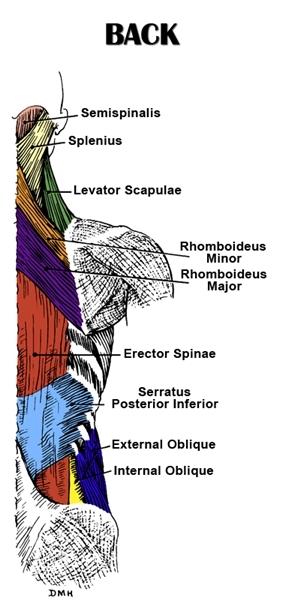
The back muscles enable you to stand up straight; support and protect your spine; and reach, pull and extend your arms and torso.
Poorly developed back muscles lead to everything from muscle tweaks and pulls to imbalances of the musculature to the all-too-common hunched-over look (the “Neanderthal look”). All of these things can lead to long term back pain (and chronic complaining!). Luckily you’ve found this page to help you prevent would-be ailments.
Latissimus Dorsi (Lats)
The latissimus dorsi, also known as the “lats” or “wings,” are the largest and most well-known of all the back muscles.
Once large enough, the lats are responsible for your body’s “V-taper” because of their protruding appearance under your armpit area and on the back of your ribs.
And as you might guess, they are the back muscles most commonly targeted by lifters in the gym. However, many fail to give them the proper attention required to reach their full potential.
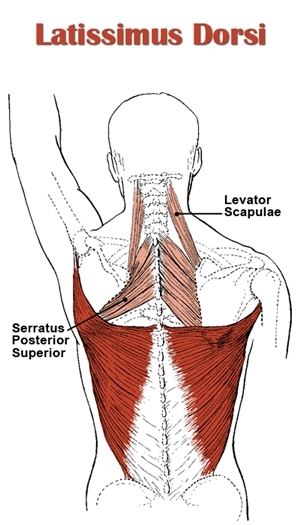
To target your lats, you can use a variety of popular back exercises, including lat pulldowns, pull ups, barbell bent over rows, dumbbell one arm rows, and deadlifts.
Trapezius (Traps)
The trapezius muscles are located between your shoulder and your neck. Since they extend higher than the collarbone height, they are most noticable from the frontal view; although they actually reach all the way down to the lower back region.
The traps consist of three sections of muscle fibers: The lower trapezius, middle trapezius and upper trapezius fibers.
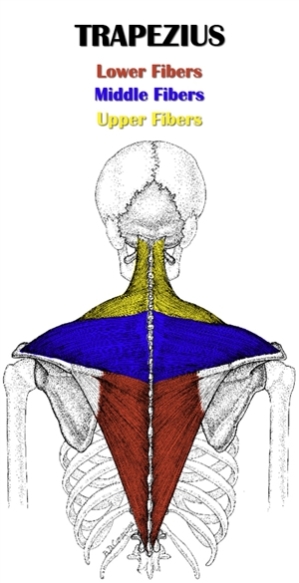
Most guys in the gym don’t pay enough attention to the traps, or they pay too much attention to the upper traps. However, an evenly and well developed trapezius muscles can highlight and excellently finish off a physique and prevent shoulder and neck problems.
Shrugs, deadlifts and power cleans hit the upper traps the strongest. Dumbbell rear deltoid raises, cable face pulls, barbell rows and seated rows are better at targeting the middle and lower trapezius fibers.
Erector Spinae (Spinal Erectors)
The erector spinae muscles, or spinal erectors, line your spinal column from the lower to the upper back.
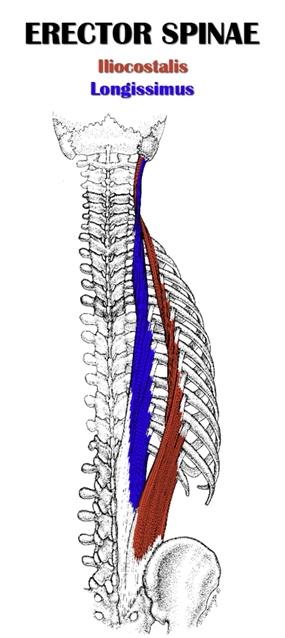
With good back training, they will develop and provide a boost to your total body strength, in addition to improving your back’s “thickness,” or “density.”
Deadlifts are the best exercise for developing these muscles. However, since so many gym-goers never do deadlifts, these crucial muscles typically receive disproportional attention.
Although deadlifts are far superior, other exercises can hit these muscles as well. Examples include hyperextensions, the barbell good morning as well as the barbell squat (especially when using heavier loads).
Rhomboid
The rhomboid muscle. This muscle is located on the upper portion of the back anatomy, underneath the trapezius. They originate from the vertebrae and insert into the scapulae.
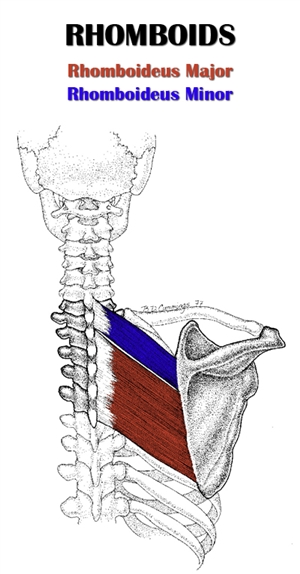
With that in mind, the best back exercises for targeting the rhomboids group are barbell rows, seated rows, t-bar rows, one-arm rows and pull ups/chin ups.
Teres Major
The teres major is a small, yet important muscle within the back. It is located underneath the lats, and has adopted the nickname, “The Little Lat.”
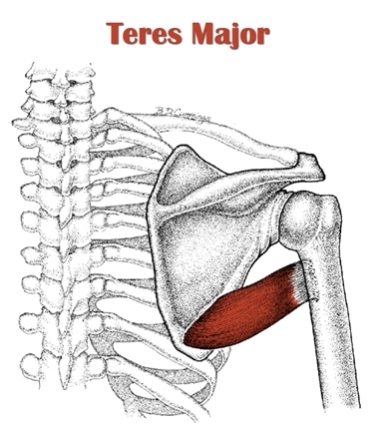
Straight-arm lat pulldowns and dumbbell pullovers most directly target this muscle. However, such isolation exercise are rarely necessary since you can sufficiently work the terest major using compounds back exercises, including various pull up and rowing movements.

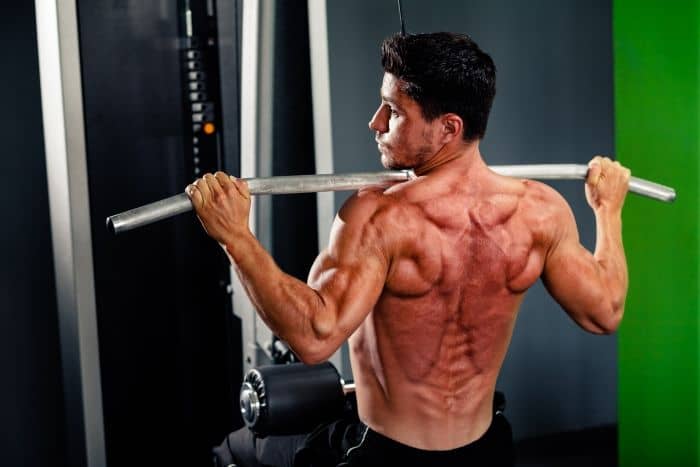

Hi Alex,
Great article, you cover so many aspects of the back muscles.
My interest is how the deadlift can help to build mass and the back muscles and you have answered many of my questions concerning the back, thank you.
For me, the deadlift is one of the greatest exercises because of how the deadlift helped me to rehabilitate my knees and strengthen my back.
At one point, I could not walk because of a torn medial meniscus and despite my fear, I started to deadlift and squat (below parallel) and found that my legs were actually getting stronger.
My walking got better and I have been gradually adding some running into the mix as well.
I could barely walk, let alone run.
So while deadlifting is a big mass builder, it can even help with the small but critical thing like walking that many of us take for granted.
In addition I had pulled my lower back several years ago while reaching to open the door of my apt.
Yes, how sad is that, but I know that I am not the only one who has faced lower back pain.
Fortunately, since doing deadlifts, I have not experienced those back pains again.
The power of the deadlift inspired me to write more about it as a tool to help people achieve both body and mind transformation.
Thank you, Alex for all of the information and guidance that you provide.
Thanks Alex for your article on back anatomy. I think I pulled a muscle. Just trying to pin point the correct area.
Of course I’m female, but once healed the exercise you sited will get greater respect in my back routine. Thanks
That’s great to hear. I hope the exercise improves your back training once you’re all healed up. Here’s to a speedy recovery.
Best,
Alex
Please provide details on thoracolumbar fascia, how to get the chrismas tree looking thoracolumbar fascia area.
That’s really just a function of spinal erector hypertrophy and low body fat percentage. So lots of lower back exercises (e.g. deadlifts, good mornings, hyperextensions) as well as some exercises that emphasize the mid erectors (e.g. bent over rows, seated good mornings, lying superman holds), plus dieting down when you’ve built up sufficient muscle mass.
Thanks! It’s very helpful to me.
Just curious how to balance out my over-developed Teres Major? I’m female, new to heavy lifting since Jan. 2018 and have noticed these muscles are getting larger more quickly than the rest of my back. Are there exercises I should avoid for awhile? (I’ve been doing bench presses, shoulder presses, deadlifts, DB rows, single-arm DB rows, DB pullovers, pull-ups, and chin-ups).
It’s probably to early to say whether these muscles are really overdeveloped relative to the rest of your back, since you’re a relative beginner. It’s likely that they just seem larger then the rest of your back because they (along with their big brother, the lats) are visually prominent muscles. That said, I’ll still answer the question as-is: to reduce emphasis, you’d want to do back exercises with less shoulder internal rotation and shoulder adduction. So, as a practical example, you could swap out pull ups for face pulls.
YOUR ARTICLE IS VERY VERY HELPFUL. THANK YOU FOR POSTING THIS.
Glad you found it so useful, Esther.